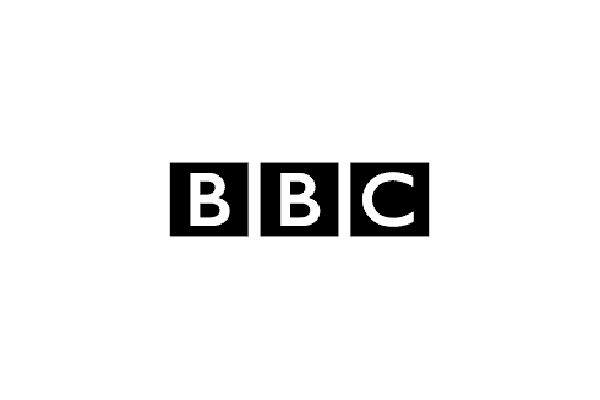This type of stocks and shares ISA is best for people who like control - it lets you choose exactly what shares, bonds or other assets to invest in, when to sell them and what to buy with your ISA allowance.
Find our best stocks and shares ISAs
Make the most of your ISA allowance with a stocks and shares ISA
What is a stocks and shares ISA?
A stocks and shares ISA is a way of buying and selling shares in companies and other assets while escaping most forms of tax on any growth.
It is also known as an investment ISA.
Every adult has a £20,000 ISA allowance each tax year and this can be put into your stocks and shares ISA. You also won't pay dividend, capital gains and income tax on any profits or interest you earn from the investments held within a stocks and shares ISA.
You can either use your entire ISA allowance for a stocks and shares ISA, or you can split it between different types of ISAs.
If you have long-term savings goals, a stocks and shares ISA might offer you a better returns than a cash ISA, although your capital is at risk.
Who can open a stocks and shares ISA?
To open a stocks and shares ISA you need to be at least 18 years old and a UK resident. You also can’t open a stocks and shares ISA for someone else - you have to do it yourself.
You can pay into more than one stocks and shares ISA during the tax year and you can have a cash ISA, lifetime ISA and an innovative finance ISA open as well, provided you don't pay in more than £20,000 across all of them in the same year.
You can also open a new stocks and shares ISA each tax year and you don't need to close old ones to open a new one.
What are the different types of stocks and shares ISAs?
![Self-selected stocks and shares ISAs]()
Self-selected stocks and shares ISAs

This type of stocks and shares ISA is best for people who like control - it lets you choose exactly what shares, bonds or other assets to invest in, when to sell them and what to buy with your ISA allowance.
![Managed stocks and shares ISAs]()
Managed stocks and shares ISAs

This type of investment ISA is ideal for beginners as it does the work for you. You answer a few questions about how comfortable you are with risk and what you want to get out of the product, decide how much to put in, then a professional does all the work of picking shares for you.
What are the different types of stocks and shares ISAs?
Self-selected stocks and shares ISAs
Managed stocks and shares ISAs
This type of investment ISA is ideal for beginners as it does the work for you. You answer a few questions about how comfortable you are with risk and what you want to get out of the product, decide how much to put in, then a professional does all the work of picking shares for you.
Our best stocks and shares ISA deals
Our editors pick these deals by weighing several factors such as the minimum initial, lump sump and monthly deposit, as well as the number of funds available to invest in.

ISA rules apply. Capital at risk.
“This stocks and share ISA allows you to grow your ISA gradually by putting in as little as £25 a month, or invest a lump sum. You can choose pick your own investments, or choose from AJ Bell's ready-made portfolios. They also offer a handy mobile app so you can track your investment from where ever you are.”

Capital at risk.
“This stocks and shares ISA makes it easy to check your investments with its app or via its website. You can also pick your own investments or choose one of HL's ready-made portfolios.”

Capital at risk.
“Wesleyan’s stocks and shares ISA aims to take the stress out of investing. With a diverse mix of assets — from UK and international shares to property and bonds — it’s designed to spread risk and target steady growth.”
What can you invest in with a stocks and shares ISA?
Stocks or shares
Investment funds
Corporate and government bonds
Unit trusts
Exchange-traded funds (ETFs)
What do you need to consider when choosing a stocks and shares ISA?
There are three main things to consider when choosing a stocks and shares ISA: control, choice and cost.
The first question you need to ask yourself is: How much control do I want?
If you don't want to choose specific stocks and shares yourself, you can get someone to do it all for you, or choose an option that greatly simplifies the process.
If you do want to choose your own investments, you need to look at how much of the market your chosen provider covers.
This can be anything from a few in-house funds all the way through to complete coverage of almost every stock, share, bond and fund available worldwide.
Finally, you need to think about costs.
Costs with stocks and shares ISAs come in the form of fees - trading fees, platform fees and management fees.
Getting someone to take full control of your money and make investment decisions on your behalf almost always costs more in fees than doing at least some of the work yourself.
However, doing all the work yourself also costs.
That's because as well as a platform fee, charged for holding your money and investments, you can also be hit with trading fees every time you buy or sell a share, fund or bond.
In the middle there are cheaper options, but they normally mean giving up either choice or control. For example, a tracker fund is generally cheaper than a managed fund, but it can't react to changes in the market the way a managed fund can.
How to invest in a stocks and shares ISA
Once you've decided to open an investment ISA, you need to decide what to do with the money you put in there.
If you've decided to go for a managed ISA, you simply need to answer a few questions about your savings goals and how comfortable you are with risk - then transfer some cash to them.
If you've decided to take more control of your money, you'll need to transfer some money to your provider - then start buying and selling individual shares, funds and more to hold in your portfolio yourself.
Lots of ISA providers will offer tips, tools and research on the various funds they offer to help you choose between them - and some will even offer model portfolios for you to copy.
Pros and cons
Benefits of investing in a stocks and shares ISA
Tax efficiency
Returns generated within a investment ISA, including capital gains and dividends, are tax-free, providing significant tax advantages compared to investing outside of an ISA wrapper.
Potential for higher returns
Investing in the financial markets through a investment ISA offers the potential for higher returns compared to cash savings accounts over the long term, although returns are not guaranteed.
Investment flexibility
Investment ISAs offer a wide range of investment options, allowing investors to create a diversified portfolio tailored to their risk tolerance and investment goals.
Compound growth
Reinvesting dividends and capital gains within a investment ISA can accelerate the growth of investments over time through the power of compounding.
Retirement planning
Stocks and Shares ISAs can be used as a tax-efficient vehicle for retirement savings, providing investors with the opportunity to build a substantial nest egg for their later years.
Risks of investing in a stocks and shares ISA
Market risk
Investing in the financial markets carries inherent risks, including the risk of capital loss due to market fluctuations, economic downturns, or geopolitical events.
Volatility
Investment ISAs are subject to market volatility, with the value of investments fluctuating over time. Investors should be prepared for short-term fluctuations and focus on long-term investment objectives.
Currency risk
Investing in international assets within a investment ISA exposes investors to currency risk, as fluctuations in exchange rates can impact the value of investments denominated in foreign currencies.
Inflation risk
Inflation erodes the purchasing power of money over time, potentially reducing the real value of investment returns. Investors should consider inflation risk when planning their investment strategy.
Liquidity risk
Some investments within a Investment ISA, such as certain types of bonds or real estate, may have limited liquidity, making it challenging to sell or exit positions quickly.
Alternatives to stocks and shares ISAs
Stocks and shares ISAs let you put money in the markets while escaping tax on returns, but they're not the only way to do this.
Pensions and lifetime ISAs also let you escape tax on the money you make from the markets - and come with added tax breaks on top.
However, they also come with age restrictions on when you can withdraw your money penalty free, or even at all, meaning they're best used for long-term savings.
On top of those two products, you also have a tax-free allowance for everything from savings interest to capital gains - meaning you need to earn a fair amount before the tax-free status of an ISA comes into effect.
But there are very few downsides to choosing a stocks and shares ISA compared to other ways of investing, with the same features available inside and outside of an ISA, so it makes sense to start there in most cases.
After all, while you might not pay tax on your returns now, if things go well you could find the extra protection that an ISA offers rather useful in a few years' time.
But if you're saving for the short term or don't want to risk your money in the hope of higher rewards, a simple savings account or cash ISA might be your best bet.
FAQs
Can I pay into multiple ISAs?
Yes, you can have as many ISAs as you want, but you can't exceed the £20,000 allowance. However, if you're under 40, you can only pay into one lifetime ISA.
Can I have a stocks and shares ISA and a cash ISA?
Yes, you can have a stocks and shares ISA and a cash ISA. Actually, you can save into a cash ISA, innovative finance ISA and a stocks and shares ISA in each tax year, but only up to £20,000 between all three types.
Are stocks and shares ISAs covered by the Financial Services Compensation Scheme (FSCS)?
Yes, most ISAs, including stocks and shares ISAs are covered by the FSCS up to £85,000 per person, per institution. This means that in the unfortunate event that your ISA provider or fund manager were to go bust, you'd be covered up to that amount.
However, this does not mean that you are protected if the investments in your stocks and shares ISA were to lose value from fluctuations in the stock market.
Always be aware that stocks and shares ISAs put your capital at risk, and you may get back less than you originally invested.
How long should I keep my money in a stocks and shares ISA for?
In terms of how long you should invest for - investing is for the long-term. If you decide to start a stocks and shares ISA, it's a good idea to invest for at least five years if you can. That's so that any ups and downs in the market have time to even out, and you are far less likely to lose money.
How can I track the performance of my stocks and shares ISA?
You can track the performance of your stocks and shares ISA mostly online or you could also ask your financial advisor for a valuation if you invested through one.
Can I transfer my cash ISA into a stocks and shares ISA?
Yes, you can transfer a cash ISA into an investment ISA but only if the company accepts ISA transfers. There may also be charges for transferring into an investment ISA.
Is a good return guaranteed in a stocks and shares ISA?
No, a good return is not guaranteed in a stocks and shares ISA. You could lose money in an investment ISA due to the volatility of the stock market.
Can I get the 25% government bonus on a stocks and shares ISA?
You can get the 25% government bonus on up to £4,000 each year if you apply for a lifetime stocks and shares ISA. This means if you save £4,000, you'll receive £1,000 from the government. However, there are a few restrictions as this ISA has been created to help people get on the property ladder and save retirement. Visit our lifetime ISA page for more information.
What happens if I put more than £20,000 in an ISA?
If you contribute more than the annual ISA allowance into an ISA in a single tax year, the excess amount will not receive the tax advantages associated with an ISA. The additional funds beyond the £20,000 limit will be considered as regular savings or investments and will be taxed according to existing tax rules. You can choose to contact HMRC, or they will contact you, at the end of the year to charge taxes owed on the money.
Didn’t find what you were looking for?
Below you can find a list of our savings pages:
Investment pages (capital at risk):
A great opportunity to save given 2025 rates - wish I'd known about this company sooner

Found the Perfect Pension with Ease

Excellent
















